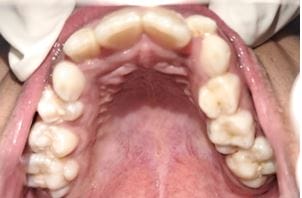Sonal Appliance an innovative space maintainer in the management of early loss of first permanent molar: A Rare Case Report
Gupta S.1*, Patra A.2, Ojha R.3, Das A.4, Baby A.5
DOI: https://doi.org/10.17511/ijmrr.2023.i04.03
1* Sonal Gupta, Head of the Department, Department of Paediatric and Preventive Dentistry, Kanti Devi Dental College & Hospital, Mathura, Uttar Pradesh, India.
2 Abhinandan Patra, Post Graduate, Department of Paediatric and Preventive Dentistry, Kanti Devi Dental College & Hospital, Mathura, Uttar Pradesh, India.
3 Riya Ojha, Post Graduate, Department of Paediatric and Preventive Dentistry, Kanti Devi Dental College & Hospital, Mathura, Uttar Pradesh, India.
4 Asmita Das, Post Graduate, Department of Paediatric and Preventive Dentistry, Kanti Devi Dental College & Hospital, Mathura, Uttar Pradesh, India.
5 Abia Baby, Post Graduate, Department of Paediatric and Preventive Dentistry, Kanti Devi Dental College & Hospital, Mathura, Uttar Pradesh, India.
Introduction: In preventative and interventional dentistry, keeping deciduous teeth until their natural exfoliation is critical. An early tooth or group of teeth loss might have a variety of effects. The first molar is the largest tooth in the mouth, it carries the most occlusal stress, and it affects the vertical distance between the mandible and the maxilla. Adolescent patients who have lost a permanent first molar (PFM) require early space maintenance. Case report: In this case report a successful use of a modified distal shoe appliance was made in a patient whose 1st permanent molar was lost before the eruption of 2nd permanent molar. In circumstances when the permanent first molar is lost before the emergence of the permanent mandibular second molar, a unique device is described in this publication. The distal extension of a normal distal shoe appliance was extended distally along with a fixed bilateral appliance, a modified band and loop, and other components in this design. Conclusion: For individuals with bilateral molar loss, a modified distal shoe appliance is a promising option.
Keywords: Tooth Extraction, Permanent First Molar, Premature Loss of Multiple Deciduous Molars, Space Maintainer
| Corresponding Author | How to Cite this Article | To Browse |
|---|---|---|
| , Head of the Department, Department of Paediatric and Preventive Dentistry, Kanti Devi Dental College & Hospital, Mathura, Uttar Pradesh, India. Email: |
Sonal Gupta, Abhinandan Patra, Riya Ojha, Asmita Das, Abia Baby, Sonal Appliance an innovative space maintainer in the management of early loss of first permanent molar: A Rare Case Report. Int J Med Res Rev. 2023;11(4):96-100. Available From https://ijmrr.medresearch.in/index.php/ijmrr/article/view/1436 |


 ©
© 